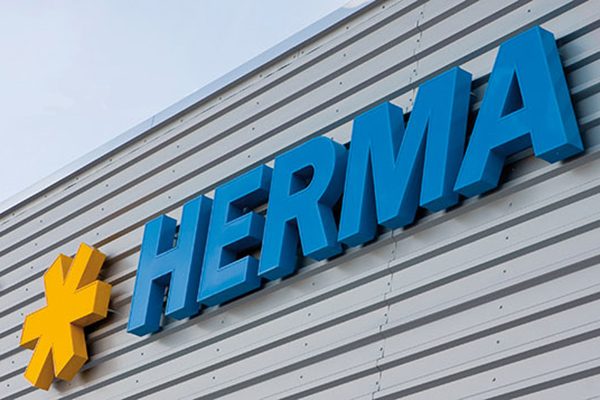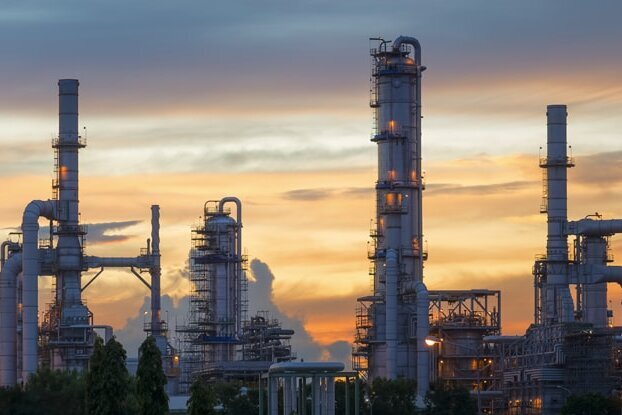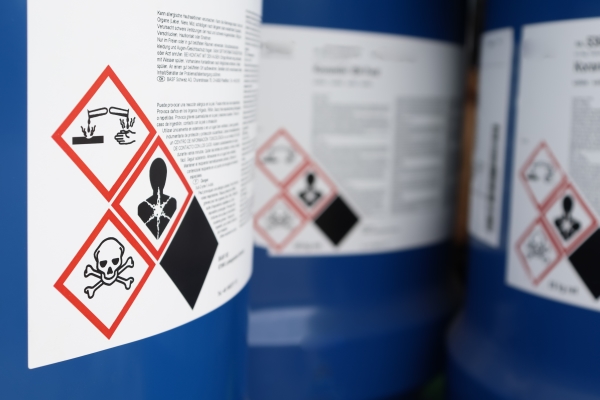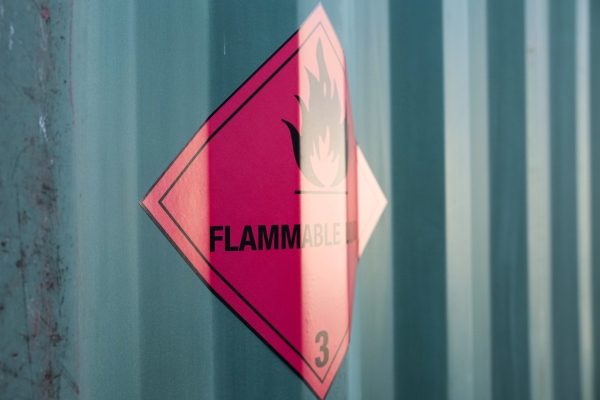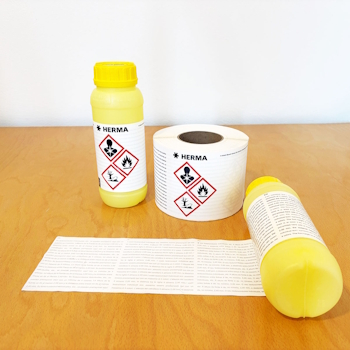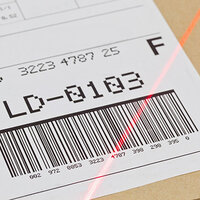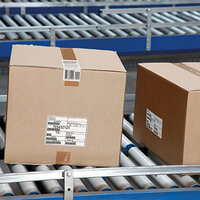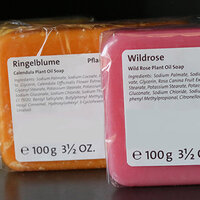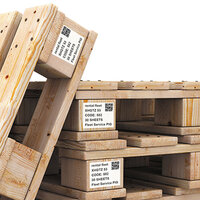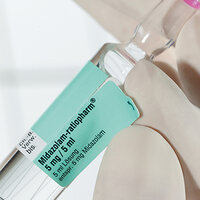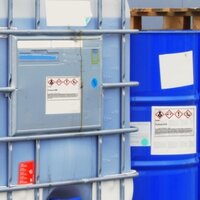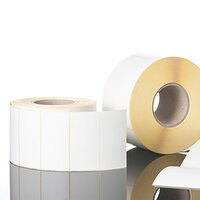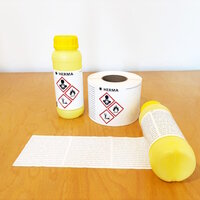Clear and legally compliant labelling with chemical labels
The labelling of products and hazardous substances in the chemical industry is governed by a whole series of legal provisions and ordinances. Chemical products, substances and mixtures are labelled safely and clearly with chemical labels in line with standardised global directives before shipping.
What are chemical labels used for?
Pictograms, hazard symbols, signal words, hazard warnings and safety instructions on the chemical labels provide information about the content and the associated hazards of the chemicals. They provide clear labelling for the consumer on the chemical product label and, as hazardous goods labels, ensure safe transport on all transport routes.
For transport by air or sea, the labelling requirements and specifications for seawater resistance according to ‘British Standard 5609 Section 2 or 3’ are added.
We work with you to develop the right chemical labels for labelling your chemical products and hazardous substances - from the selection of materials all the way to printing.
We supply chemical labels on rolls, sheets or fanfolded - in your desired label format - for your printing system - in the best quality.
To learn more about solutions for specific products in the chemical industries, click on one of the links to the product pages below. Or use our contact form. We’ll be glad to advise you.
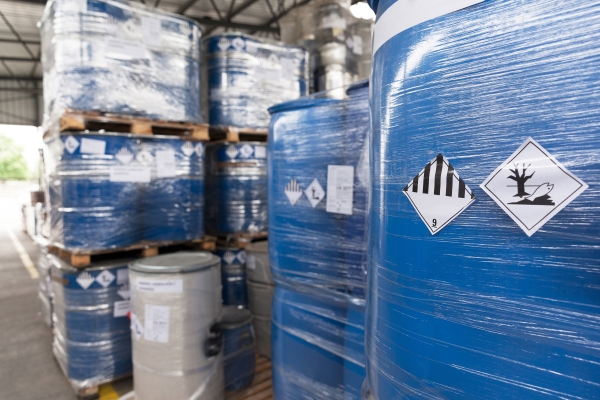
Comprehensive expertise for labelling your dangerous goods.
HERMA and BOXLAB Services have concluded a cooperative agreement for labelling dangerous goods. Even small quantities can be delivered quickly and in high quality - legally compliant and in conformity with standards.
Discover your advantages and detailed information on placards, warning plates and hazard labels
Difficult conditions for labeling substances in the chemical industry? We have the solution for you!
Chemical labels must stick firmly to containers of all kinds: barrels, drums, canisters, shipping containers, IBCs, FIBCs, bottles and pallets.
- Chemical stickers have to be able to meet the many challenges posed by different surfaces, such as metal, plastic, glass and wood
- Labels for chemicals need high adhesive strength even on highly curved, rough, dusty or oily surfaces
- Depending on their purpose, they have to be resistant to chemicals (oil, acids, alkalis, solvents)
- Environmental influences such as heat, moisture, cold and UV radiation are reliably mastered by robust HERMA film labels
- HERMA chemical labels also pass the additional temperature requirements for hot filling with flying colours
- We produce hazardous goods labels and labels for dangerous goods according to your requirements from a wide range of seawater-resistant adhesive materials, also in accordance with the BS 5609 Section 3 standard
- We supply overprintable GHS labels with diamond frames for custom-printing on your thermal transfer printers, laser printers or inkjet printers with pigmented inks
- We also supply ready-printed hazardous goods labels with the prescribed diamond shape and in highly visible colours, for every class of hazardous substance
- Chemistry labels, supplied on rolls, sheets or fanfolded - in your desired label format - for your printing system - in the best quality.
Discover practical solutions with chemical labels from HERMA
In the chemical sector, extremely secure adhesion and durability are particularly important to ensure that the important information on zhe most varied containers reaches the recipient safely. Resistance to chemicals and seawater, as well as secure adhesion even on strongly curved or oily surfaces, are the distinguishing features of HERMA chemical resistant labels for this application.
Solutions for the chemical industry
Seawater-certified GHS labels
Track & trace in the chemical industry with chemical container labels
CLP labelling for chemical products: wrap-around labels
Find out more about our solutions for specific products in the chemical industry
Please use this contact form for inquiries about industrial requirements.
If you have any questions about HERMA branded products in smaller packaging units, we look forward to your inquiry using the contact form "Office and Home".
Request a quotation
We produce labels according to your specifications - to suit your industrial application!

Please take a moment to give us some detailed information on the following page so that we can advise you well.
HERMA Accessibility
We are currently working on making our forms accessible. If you are currently experiencing difficulties using them, please contact us by phone at +49 (0)711 7702-0 or by email using the link below – we will be happy to help. barrierefreiheit(at)herma.de
Discover our strengths and your advantages:
HERMA - your label manufacturer
